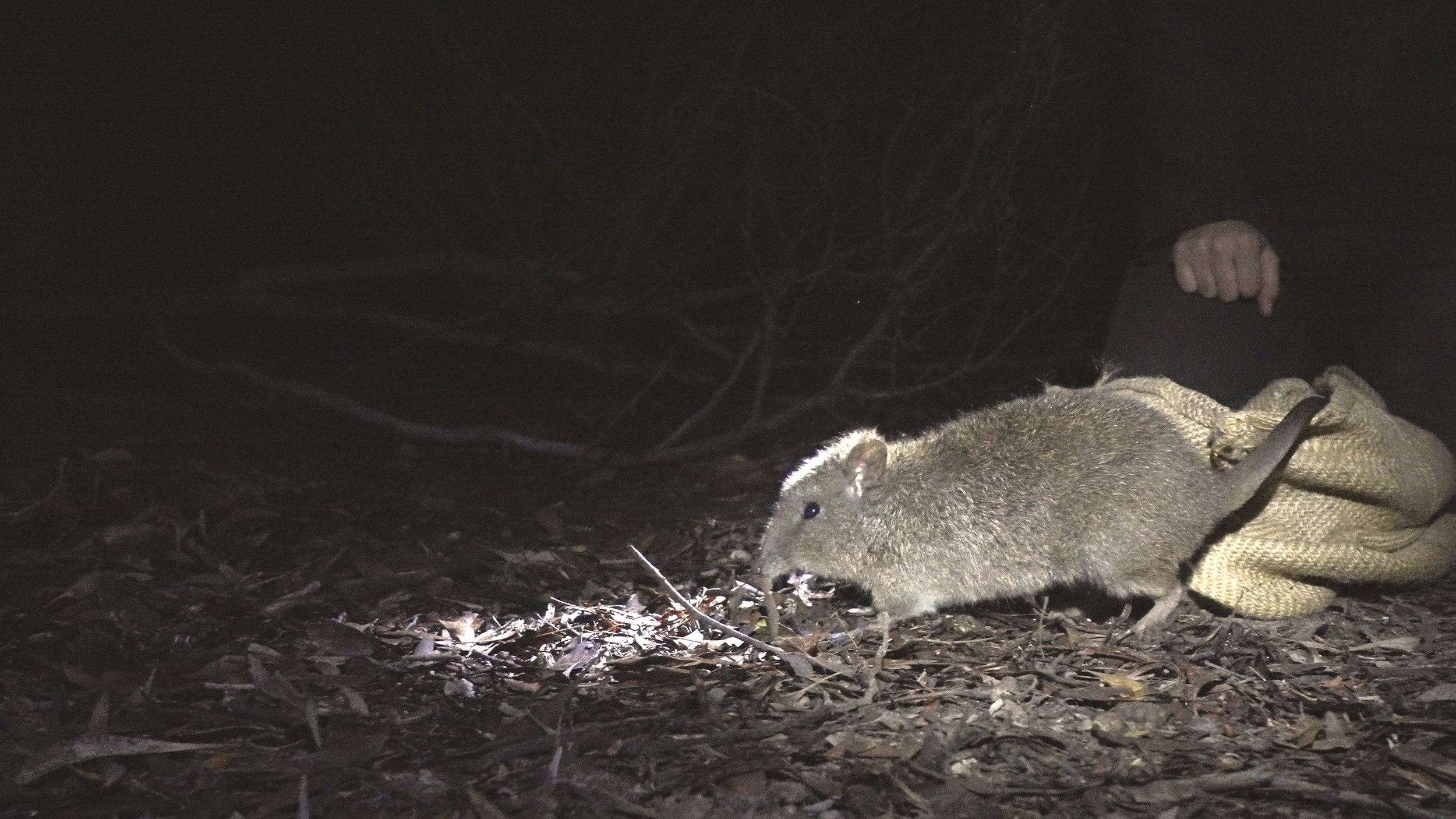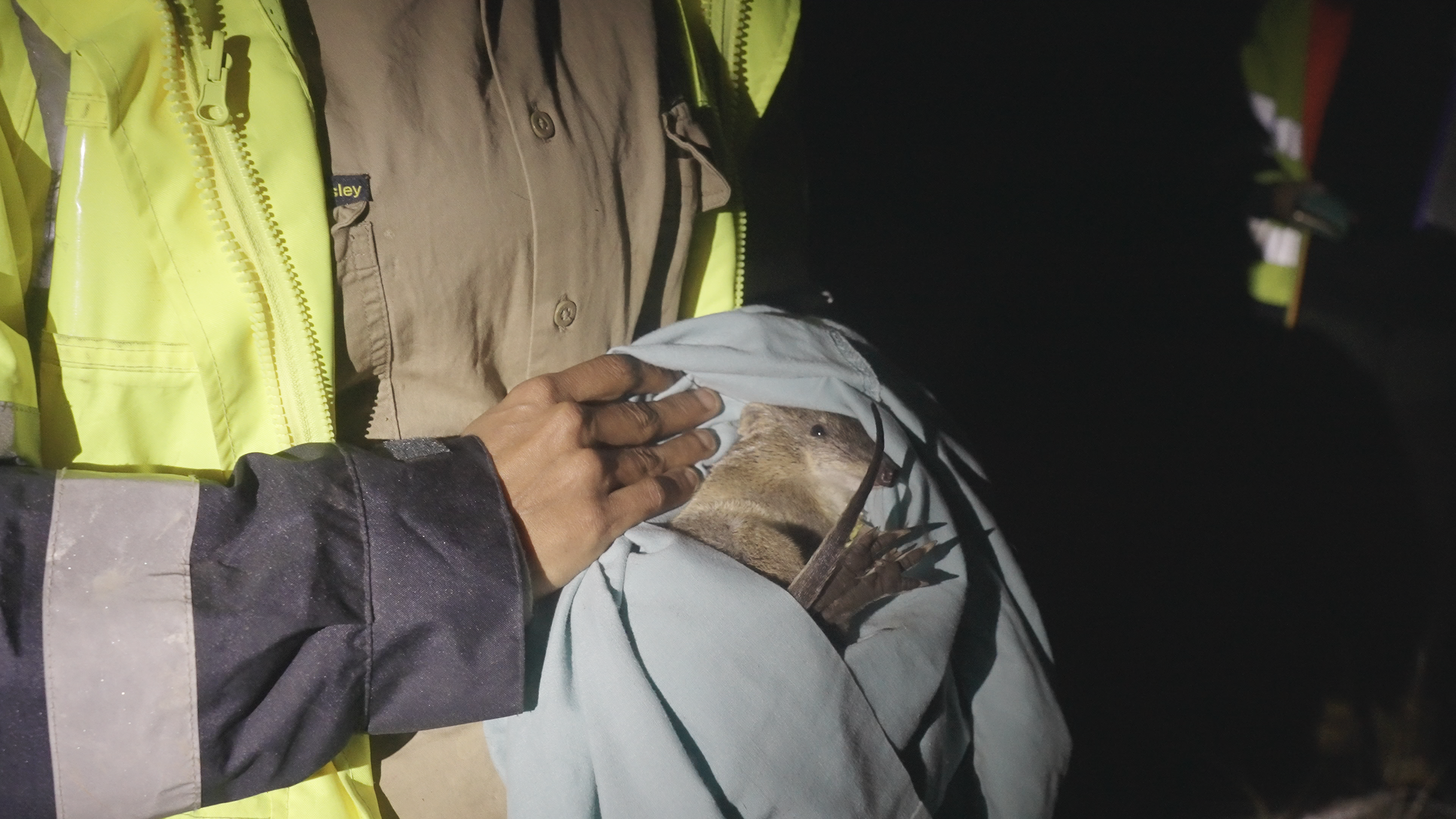
LONG-NOSED POTOROO
The long-nosed potoroo (potorous tridactylus) is a small, nocturnal marsupial native to Australia. Often described as a "living fossil", it has remained largely unchanged for over 10 million years and belongs to an ancient branch of kangaroo evolution. Its role in dispersing seeds and fungal spores makes it vital to the health of Australian ecosystems.
Physical description
This marsupial stands around 20 cm tall and weighs up to 1.6 kg. It has a pointed snout, grey-brown fur, a pale belly, and a sparsely furred tail. The potoroo moves with a characteristic four-legged shuffle but will hop when startled. Its ancient lineage is shared with the endangered long-footed potoroo and Gilbert’s potoroo – the latter being Australia’s most endangered marsupial.
Habitat and distribution
Historically widespread across southeastern Australia, long-nosed potoroos are now restricted to fragmented pockets along the eastern coast and Tasmania. They prefer dense understorey in cool temperate rainforests, wet and dry sclerophyll forests, and coastal heathlands. These habitats offer shelter from predators and access to a diverse diet.
Habitat destruction due to agriculture, logging, and urbanisation has drastically reduced their range. Introduced predators like foxes and feral cats, inappropriate fire regimes, and competition from invasive herbivores have contributed to the species’ decline. Tasmania’s populations have fared better due to the absence of foxes.
Behaviour and diet
Nocturnal and solitary, long-nosed potoroos forage using their elongated snouts and strong claws to dig for fungi, seeds, roots, tubers, and invertebrates. Fungi, particularly truffles, form a large part of their diet – with over 50 species recorded. These foraging behaviours contribute to forest health by improving soil structure and dispersing fungal spores that assist plant growth.
Potoroos are shy and rarely seen; runways in the undergrowth and distinctive diggings are often the only signs of their presence. Males have larger, overlapping home ranges, while females maintain smaller, more exclusive territories.
Breeding
Breeding occurs throughout the year, with peaks in late winter and summer. After a gestation period of 38 days, females give birth to a single joey, which remains in the pouch for about 120–130 days and is weaned soon after. Females can produce up to 2.5 offspring annually. In the wild, potoroos live for 5–7 years, and up to 12 in captivity.
Conservation status
LC
NT
VU
EN
CR
EW
EX
Least Concern
Near Threatened
Vulnerable (IPBC Act 1999)
Endangered
Critically Endangered
Extinct in the Wild
Regionally extinct
Threats
Predation by introduced species, particularly red foxes and feral cats.
Habitat loss and fragmentation due to agriculture, urbanisation and logging.
Inappropriate fire regimes reducing understorey vegetation needed for shelter and food.
Competition with introduced herbivores such as rabbits and deer.
Climate change impacts including prolonged droughts and reduced food availability.

Success in the field
In 2002, 39 long-nosed potoroos were introduced to Mt Rothwell Sanctuary from Warrawong Wildlife Sanctuary in South Australia. Their survival was uncertain, but the population has since thrived, particularly during wetter La Niña periods, alongside southern brown bandicoots. Mt Rothwell remains Odonata’s core site for this species.
Odonata is now working to boost genetic diversity, increase population numbers, and identify suitable reintroduction.

